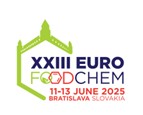Scientific journal
Journal of Food and Nutrition Research
Summary No. 2 / 2022
Furmančíková, P. – Šťástková, Z. – Navrátilová, P. – Bednářová, I. –
Prevalence and detection of Helicobacter pylori in raw cows’ and goats’ milk in selected farms in the Czech Republic
Journal of Food and Nutrition Research, 61, 2022, No. 2, s. 192-197
Petra Furmančíková, Department of Animal Origin Food and Gastronomic Sciences, Faculty of Veterinary Hygiene and Ecology, University of Veterinary Sciences Brno, Palackého tř. 1946/1, 612 42 Brno, Czech Republic. E-mail: furmancikovap@vfu.cz
Received 29 January 2022; 1st revised 8 April 2022; 2nd revised 16 May 2022; accepted
Summary: Helicobacter pylori is currently found in more than a half of the human population and is the cause of serious gastrointestinal diseases such as gastritis, gastric ulcers or adenocarcinoma. H. pylori infection can be transmitted to humans through contaminated raw materials and food of animal origin. In this study, individual cows’ milk samples (n = 77) and individual goats’ milk samples (n = 52) from two farms in Moravia (Czech Republic) were analysed. The classical culture method and the nested polymerase chain reaction (nested PCR) method were used for detection of H. pylori. The culture method did not demonstrate the presence of H. pylori in any of the examined samples. Using the nested PCR method, 31 samples (40 %) of raw cows’ milk and 30 samples (58 %) of raw goats’ milk were positive for the presence of H. pylori. The study demonstrated that nested-PCR was highly sensitive for the detection of H. pylori in raw milk samples. The results of the study showed the presence of H. pylori DNA in a high percentage of both cows’ and goats’ raw milk samples, indicating a high possibility of inter-animal transmission within individual farms.
Keywords: Helicobacter pylori; nested polymerase chain reaction; food safety; raw milk
Download:
(pdf, 481.94 Kb, 471x)










